PENGUIN  CLASSICS
CLASSICS
PITCHING IN A PINCH
CHRISTY MATHEWSON was one of the most dominant pitchers ever to play baseball and was the games first national superstar. Born in Factoryville, Pennsylvania, in 1880, Mathewson began playing semiprofessional baseball at the age of fourteen. After graduating from Bucknell University, he played in the New England Baseball League until his contract was bought by the New York Giants in 1900. He began inauspiciously in the Majors, but with the help of Giants manager John McGraw he became an unstoppable force on the mound, winning at least twenty-two games for twelve straight years. In the 1905 World Series, he pitched three complete-game shutouts to lead his Giants to the title over the Chicago Cubs. Mathewson pitched in some of the most memorable moments in baseball history, including the infamous Merkles Boner game in 1908. A devout Christian, he never played on Sundays. After retiring from pitching, he was commissioned as a captain in the Chemical Warfare Service during World War I. On the last training run before the division faced the Germans in September of 1918, he was exposed to mustard gas. He returned to baseball as a coach and team president after the warand in 1919 was one of the few to suspect publicly that the White Sox were throwing the World Seriesbut he never regained his full health and died in 1925 from tuberculosis at the age of forty-five. He was posthumously elected for inclusion in the Baseball Hall of Fame in 1936, its inaugural year, as one of its first five inducteesits Five Immortals.
CHAD HARBACH grew up in Wisconsin and was educated at Harvard and the University of Virginia. He is a cofounder and coeditor of n+1. His critically acclaimed debut novel, The Art of Fielding, was a New York Times bestseller.
RED SMITH won the Pulitzer Prize for Commentary in 1976, the first sportswriter ever to be honored by that award. He is also the namesake of the Red Smith Award, given annually by the Associated Press Sports Editors for major contributions to sports journalism. Smith died in 1982.
CHRISTY MATHEWSON
Pitching in a Pinch
BASEBALL FROM THE INSIDE
Foreword by
CHAD HARBACH
Afterword by
RED SMITH
PENGUIN BOOKS
PENGUIN BOOKS
Published by the Penguin Group
Penguin Group (USA) Inc.,
375 Hudson Street, New York, New York 10014, USA

USA | Canada | UK | Ireland | Australia | New Zealand | India | South Africa | China
Penguin Books Ltd, Registered Offices: 80 Strand, London WC2R 0RL, England
For more information about the Penguin Group visit penguin.com
First published in the United States of America by G. P. Putnams Sons 1912
This edition with a foreword by Chad Harbach and an afterword by Red Smith published in
Penguin Books 2013
Foreword copyright Chad Harbach, 2013
Afterword copyright Red Smith, 1977
All rights reserved. No part of this product may be reproduced, scanned, or distributed in any printed or electronic form without permission. Please do not participate in or encourage piracy of copyrighted materials in violation of the authors rights. Purchase only authorized editions.
The afterword by Red Smith first appeared in the edition of Pitching in a Pinch published by Stein and Day in 1977.
ISBN: 978-1-101-61439-6
CIP data available

Foreword
In the original preface to Pitching in a Pinch, the sportswriter John N. Wheeler (who had a ghostly hand in the books composition as well) remarked that to introduce Christy Mathewson would be a superfluous piece of writing and a waste of white paper. This was not press-box hyperbole. By spring 1912, when Pitching in a Pinch was published, New York Giants pitcher Christopher Mathewsona.k.a. Christy, Matty, or, more obscurely, Big Sixhad become the nations first sporting icon, the original and archetype of the American superstar. Tall and blond and broad-shouldered, college educated (he earned a 96 in analytic chemistry at Bucknell while starring for the football team), ferociously competitive but always fair-minded (the umpires looked to him on close calls), Matty seemed too good to be real. He was the most famous ballplayer in America by far, and one of the most famous people, period. If you didnt know Matty, you didnt know much.
Much of his fame, of course, owed to his dominance on the mound. In 1900, while still a teenager, Matty broke in with the Giants. In 1905, he played the best World Series anyone has ever played, firing three complete-game shutouts against the As in six daysthough he did, it should be noted, walk one batter. By the time he retired, Matty had racked up 373 wins to go with a handsome 2.13 career ERA. When the Hall of Fame opened in 1936, he was among the celebrated inaugural five inducteesthe only one of the five not to live to see that day.
As a pitcher, Matty was Greg Maddux in Roger Clemenss body. He could fire the ball by hitters, and sometimes did, but as he writes in these pages, To be a successful pitcher in the Big League, a man must have the head and the arm:
A man should always hold something in reserve, a surprise to spring when things get tight. If a pitcher has displayed his whole assortment to the batters in the early part of the game and has used all his speed and his fastest breaking curve, then, when the crisis comes, he hasnt anything to fall back on.
Mathewsons motion was languid, his manner implacable, his memory flawless. Actually, recalled his longtime catcher, Chief Meyers, thats what made him a great pitcher. His wonderful retentive memory. Any time you hit a ball hard off of him, you never got another pitch in that same spot again. He possessed an unusually large armory of pitches, which he deployed with pinpoint control (he led the league in strikeouts per walk nine times). That armory included his fadeaway, a baffling screwball that, because it strained his arm, he could throw only a handful of times per game, a constraint that suited his tactical mind.
In other words, Matty pitched like a manager. In this he was aided not only by his natural gifts but by his long apprenticeship to the craftiest manager of all, John McGraw. Pitching in a Pinch springs to life whenever the Giants skipper comes onto the scene:
McGraw leaps into the air, kicks his heels together, claps his mitt, shouts at the umpire, runs in and pats the next batter on the back, and says something to the pitcher. The crowd gets its cue, wakes up and leaps into the air, kicking its heels together. The whole atmosphere inside the park is changed in a minute, and the air is bristling with enthusiasm. The game has found Ponce de Leons fountain of youth, and the little, silent actor on the third base coaching line is the cause of the change.
Time and again, Matty gives McGraw credit for the Giants successes (Every play that season was made from the bench, made by John McGraw through his agents, his manikins) and lauds McGraws canny, cunning, and feel for the game. Indeed, Pitching in a Pinch is less about pitching than about the pinchthat decisive, climactic moment when a glance or a word or a tip of ones hat takes on more import than in any spy thriller or novel of manners. It was McGraw who coined the term pinch (from whence our pinch hitter comes), and it was McGraw who was its master, nudging the narrative forward in his favored direction.

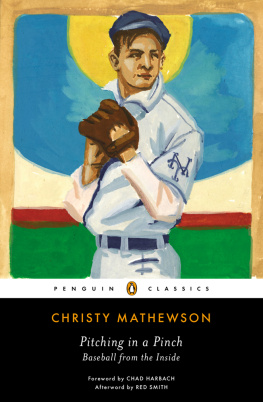

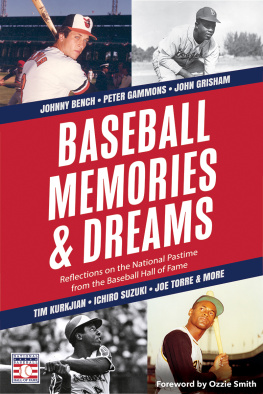


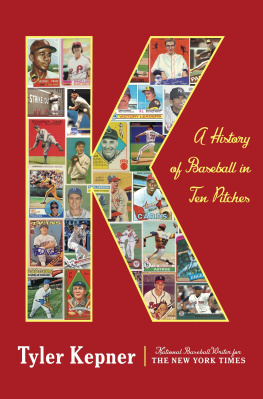
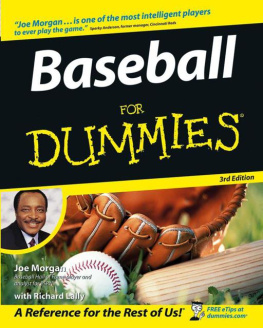
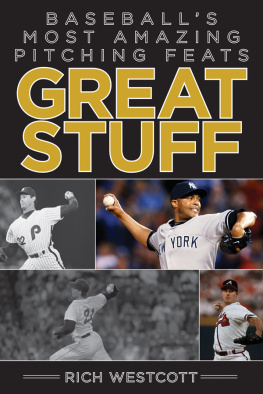


 CLASSICS
CLASSICS